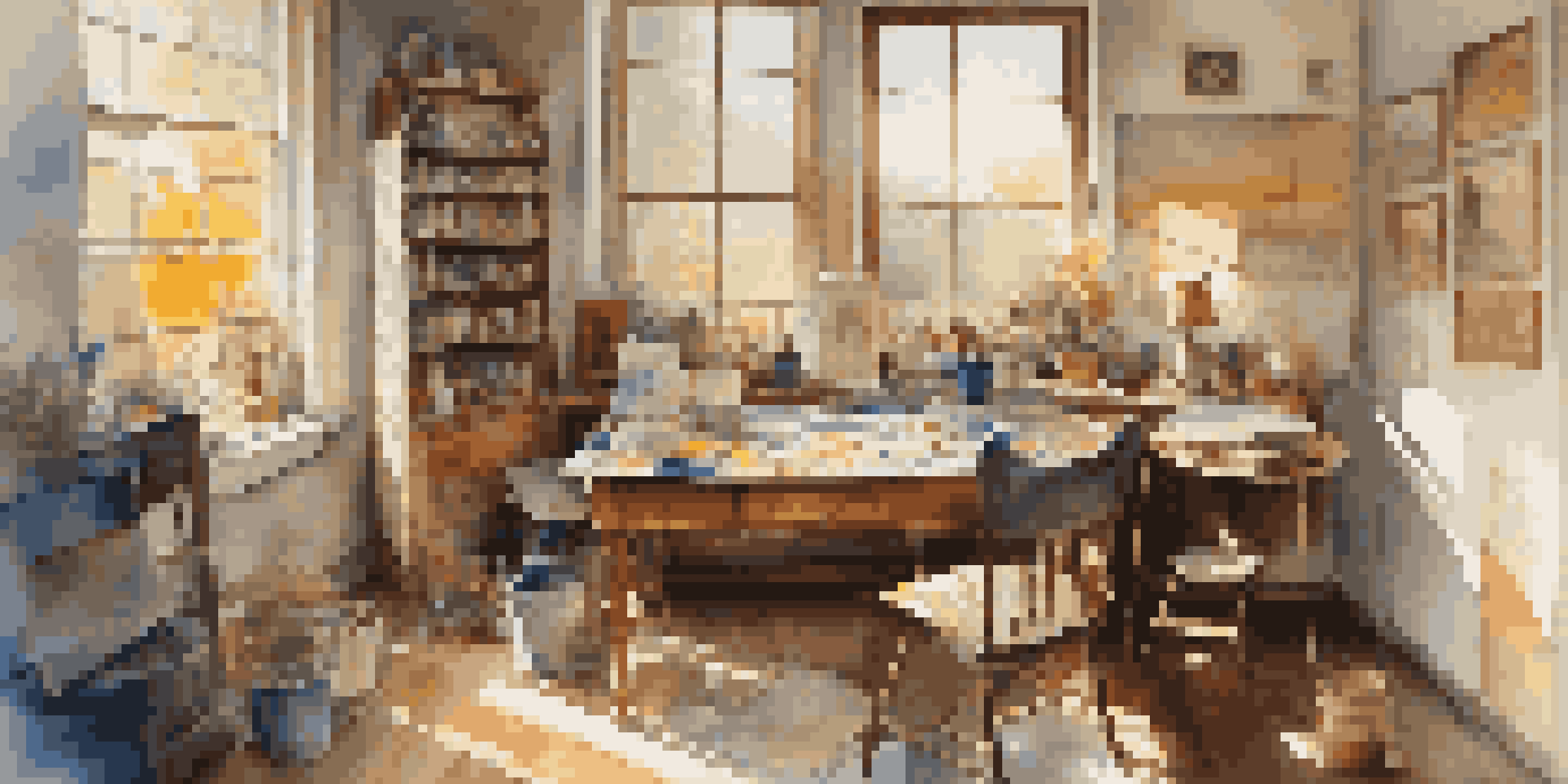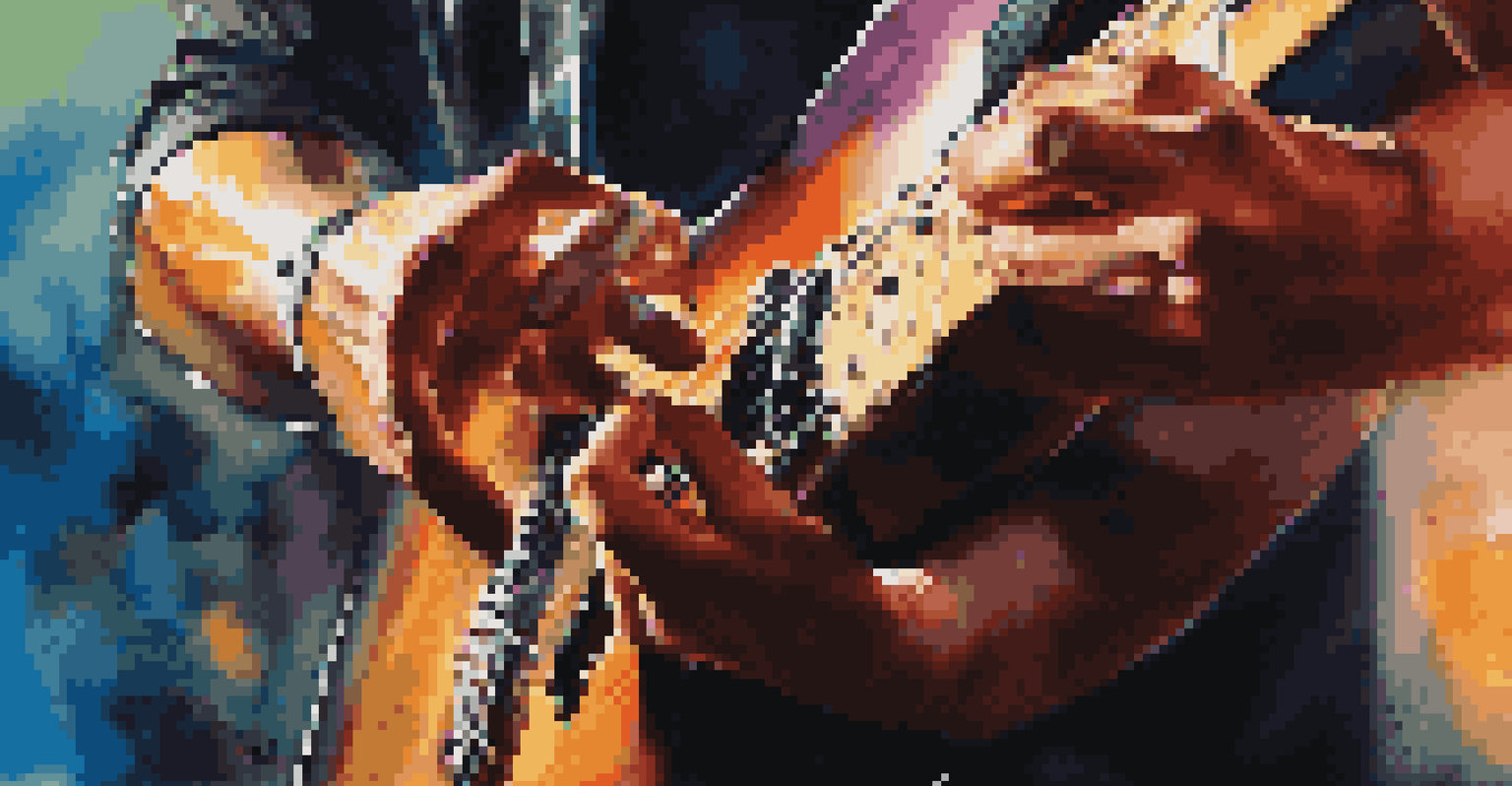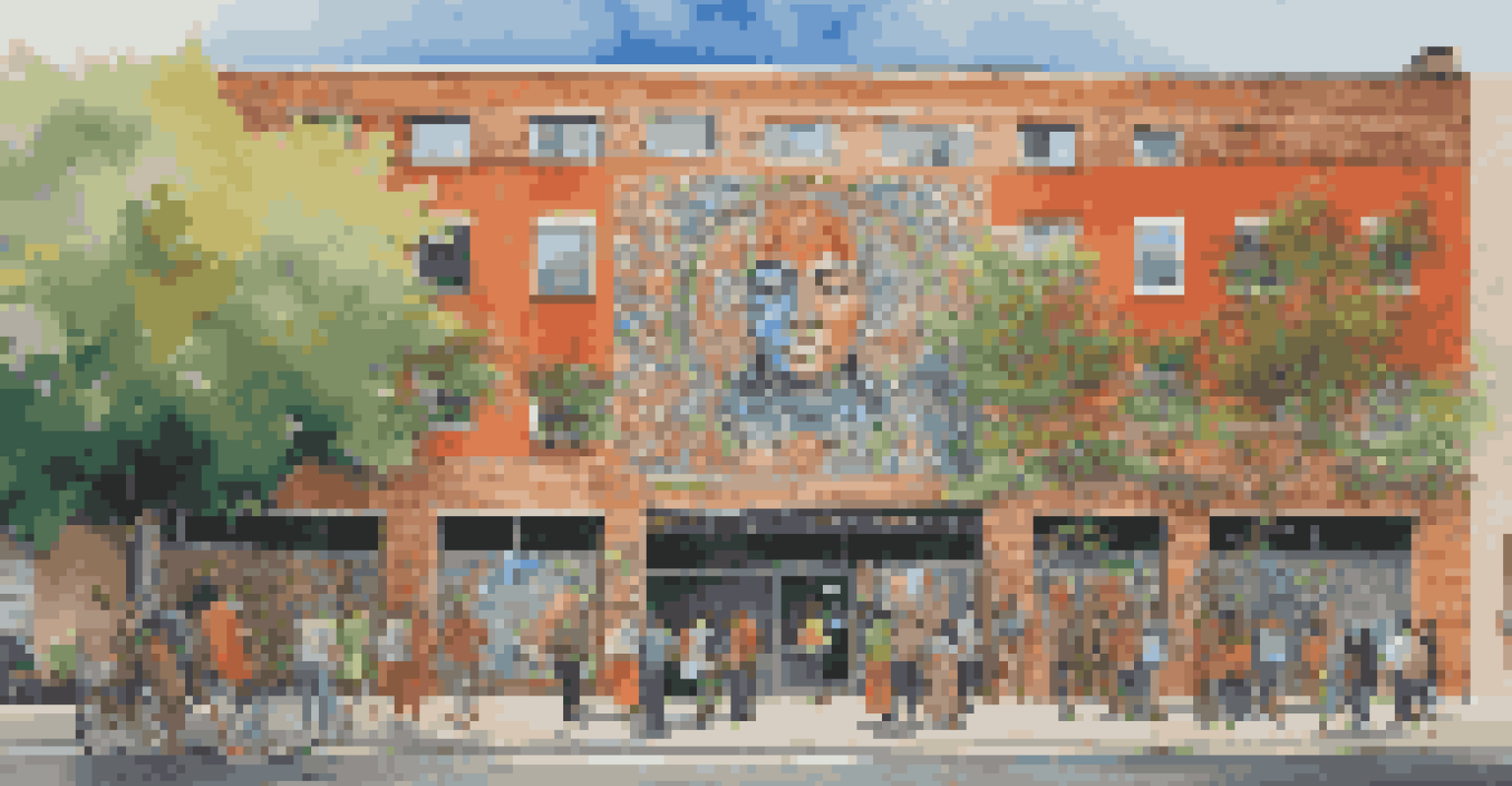The Connection Between Authenticity and Artistic Innovation

Understanding Authenticity in Art
Authenticity in art refers to the genuine expression of an artist's thoughts, feelings, and experiences. It’s about being true to oneself and conveying one’s unique perspective through creative work. This genuine expression resonates with audiences, often leading to deeper connections and emotional responses.
Art is the most beautiful of all lies; it is the most honest of all truths.
When artists embrace their authentic selves, they often break away from traditional norms and expectations. This freedom allows them to explore new techniques and ideas that may not conform to mainstream trends. For instance, an artist who shares personal stories can evoke powerful emotions that generic works might fail to achieve.
In a world where imitation can be rampant, authenticity becomes a rare gem that stands out. It invites audiences into a more intimate experience, fostering a sense of trust and connection. This is why understanding authenticity is crucial for any artist looking to innovate and inspire.
The Role of Vulnerability in Creativity
Vulnerability is often seen as a weakness, but in the realm of art, it’s a powerful tool for innovation. When artists share their insecurities and struggles, they invite others to relate and connect. This openness can lead to groundbreaking works that challenge societal norms and provoke thought.

For example, musicians like Adele have built their careers on the foundation of vulnerability. By sharing their heartaches through music, they create an emotional landscape that resonates deeply with listeners. This not only drives innovation in their sound but also sets a standard for authenticity in the industry.
Authenticity Drives Emotional Connection
Genuine artistic expression resonates deeply with audiences, fostering stronger emotional connections.
Embracing vulnerability allows artists to take risks that can lead to unique and innovative expressions. It encourages them to move beyond safe choices and delve into uncharted territories of creativity, ultimately resulting in work that is not just heard, but felt.
Cultural Context and Artistic Expression
Art does not exist in a vacuum; it is deeply influenced by cultural contexts. Authenticity often emerges from an artist’s background, experiences, and the societal issues they face. By weaving their cultural narratives into their work, artists can create pieces that are both innovative and reflective of their truths.
The artist is not a special kind of person; rather, each person is a special kind of artist.
Consider the impact of hip-hop as a genre born from the experiences of marginalized communities. Artists like Kendrick Lamar integrate their personal and cultural stories into their lyrics, pushing boundaries in both lyrical content and musical style. This connection to authenticity not only drives innovation within the genre but also sparks broader conversations about culture and identity.
By embracing their cultural contexts, artists can create work that challenges norms and inspires change. This intersection of authenticity and cultural expression is essential for fostering artistic innovation.
The Impact of Technology on Authenticity
In today's digital age, technology plays a pivotal role in shaping authenticity in art. With platforms like social media, artists can share their work and connect with audiences directly, offering a glimpse into their creative processes. This transparency fosters a sense of authenticity that was previously difficult to achieve.
However, the digital landscape also presents challenges. The pressure to conform to trends or gain likes can dilute an artist's genuine voice. For instance, an artist may feel compelled to create content that appeals to a wider audience, risking their authenticity for popularity.
Vulnerability Fuels Creative Innovation
When artists embrace vulnerability, they take creative risks that lead to groundbreaking and relatable works.
Balancing the advantages of technology with the need for authenticity is crucial. By staying true to their creative vision while leveraging digital tools, artists can innovate and maintain their unique voices in a crowded marketplace.
The Intersection of Authenticity and Audience Engagement
Authenticity can significantly enhance audience engagement. When artists present their true selves, audiences feel a stronger connection, making them more likely to support and share their work. This genuine interaction fosters loyalty and encourages an ongoing dialogue between artist and audience.
For example, live performances often showcase an artist's authenticity, allowing them to connect with their audience in real-time. When an artist shares stories or interacts with fans during a concert, it creates an immersive experience that resonates on a personal level. This engagement not only enhances their artistic expression but also drives innovation in how performances are crafted.
Ultimately, the relationship between authenticity and audience engagement is symbiotic. As audiences crave genuine connections, artists must continue to innovate and explore new ways to express their authentic selves.
Learning from Authentic Artistic Movements
Throughout history, various artistic movements have highlighted the importance of authenticity. From the Romantic movement, which celebrated individual emotion, to the Beat Generation, which embraced raw honesty, these movements showcase how authenticity can lead to significant innovation. They remind us that art flourishes when it reflects the artist's truth.
The emergence of street art is a modern example of this principle in action. Artists like Banksy use public spaces to convey powerful messages, often challenging societal norms. Their authentic expressions not only beautify urban landscapes but also provoke thought and discussion, pushing the boundaries of what art can achieve.
Cultural Context Shapes Artistic Truths
Artists' backgrounds and societal issues influence their authenticity, resulting in innovative expressions that challenge norms.
By studying these movements, contemporary artists can draw inspiration from the past. Authenticity remains a timeless catalyst for innovation, reminding us that true artistic expression often resonates across generations.
Conclusion: Embracing Authenticity for Future Innovation
In conclusion, the connection between authenticity and artistic innovation is profound and multifaceted. Artists who embrace their true selves can create compelling work that resonates deeply with audiences. This genuine expression not only drives innovation but also fosters a sense of community and understanding.
As we look to the future, it’s essential for artists to prioritize authenticity in their work. By doing so, they can inspire others and contribute to a vibrant, innovative artistic landscape. This commitment to genuine expression encourages diversity of thought and creativity, paving the way for a richer cultural experience.

Ultimately, the journey of artistic innovation is one of self-discovery. By embracing authenticity, artists can unlock their full potential, creating work that not only reflects their truths but also inspires others to do the same.